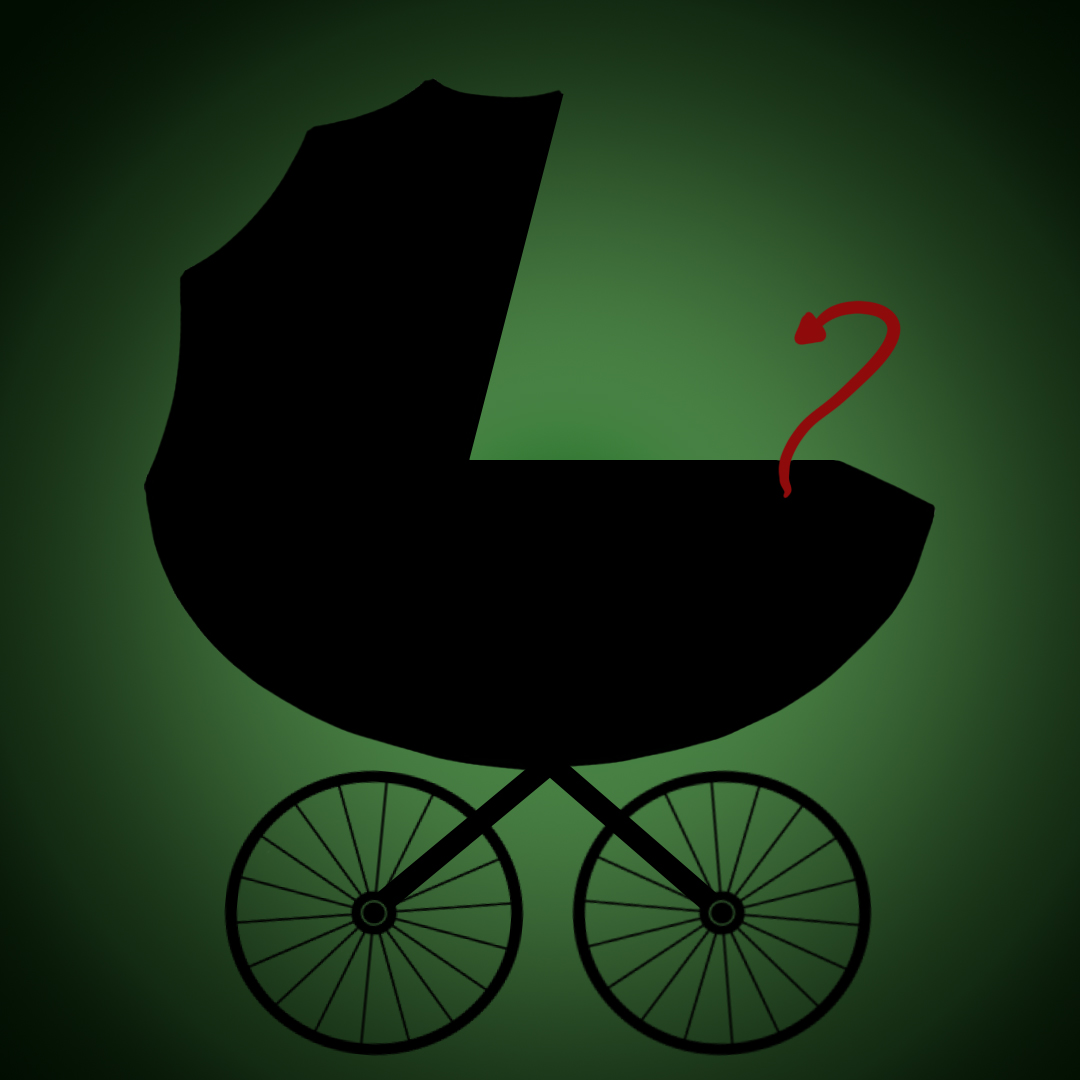The Yellow Wallpaper in Rosemary's Baby
 To some people, Rosemary’s Baby is a timeless, eerie classic that deserves to be shared. To others, it may just be that strange movie that Blair and Dan watched together over the phone in Gossip Girl. To me, it was the movie with the most amount of yellow and perhaps the most unintentional amount of allusion I have ever seen. I read Charlotte Perkin Gilman’s dark short story “The Yellow Wallpaper” in high school, not long before watching Roman Polanski’s cursed movie for the first time. I remember noticing a pattern and then pointing out every single yellow item onscreen. There were so many that I became an unbearable company. Yet the parallels between these two works run much deeper than the shared color.
To some people, Rosemary’s Baby is a timeless, eerie classic that deserves to be shared. To others, it may just be that strange movie that Blair and Dan watched together over the phone in Gossip Girl. To me, it was the movie with the most amount of yellow and perhaps the most unintentional amount of allusion I have ever seen. I read Charlotte Perkin Gilman’s dark short story “The Yellow Wallpaper” in high school, not long before watching Roman Polanski’s cursed movie for the first time. I remember noticing a pattern and then pointing out every single yellow item onscreen. There were so many that I became an unbearable company. Yet the parallels between these two works run much deeper than the shared color.
“The Yellow Wallpaper” was published in The New England Magazine in 1892. It is a series of journal entries written by the protagonist, a woman who suffers from postpartum depression and is taken to a summer house. She believes it’s for her own health. Her husband is a doctor who forces her to stop working and insists she shouldn’t write nor do anything other than rest in bed – a treatment that was common for women during that time period. He believes that she has “temporary nervous depression – a slight hysterical tendency” and dismisses her any time she voices her discomfort by calling her cute names like “a blessed little goose.” The woman is forced to stay in a room upstairs that used to be a nursery. She obsesses over the yellow wallpaper putrid colors and an inconsistent pattern. With time she is driven further and further into madness. She sees women behind the wallpaper and tries to free them with her nails and teeth. On the last day, she locks herself in the room and refuses to let her husband inside. Once he pries open the door, he collapses at the sight of her.
Rosemary’s Baby was released in 1968 and it was based on a novel by Ira Levin. The movie features Mia Farrow as Rosemary Woodhouse, a young woman who moves into an apartment in New York City with her husband, Guy. The most popular summary is that Rosemary is tricked by a coven into sleeping with the devil himself and then gives birth to the antichrist. And yet the most interesting parts are the details of her marriage.
Guy is a struggling actor and a constant source of conflict is his obsession with his career and overall self-centeredness. When the next-door neighbors, the Castevets, are introduced, he befriends them a lot quicker than Rosemary does. Mrs. Castevet brings the couple some secretly poisoned mousse on the night that they had planned on trying to conceive a baby. When the old woman leaves, Rosemary takes a few bites and tells Guy she feels a chalky under taste. He tells her there is no under taste and orders her to finish eating it.
The mousse makes Rosemary dizzy and she collapses so Guy carries her to bed. This is when her hallucinations begin. She has visions of her neighbors surrounding her as the devil takes her. In the morning, she has scratches along her sides. Guy apologizes for the scratches and laughs it off, even when she says that something inhuman was with her that night. Rosemary raises the question of why Guy had to force himself on her when she was ill instead of waiting for the next morning. He dismisses her again and heads out for work.
There are many instances in which Guy sides with the neighbors and with the coven’s appointed obstetrician, Dr. Sapirstein, and against his wife. There is an instance where Rosemary tells Guy that she wants to go back to her old doctor because she looks unhealthier every day and has consistent pain. He refuses and tells her that switching would not be fair to Dr. Sapirstein.
Guy behaves just like John, the protagonist’s husband in “The Yellow Wallpaper.” Both husbands gaslight their wives’ discomforts and claim to do right by them even though ultimately they are the sources of the conflict. If Guy had stood by Rosemary and protected her against the coven, she would have likely been safe. Similarly, if John had paid attention to what his treatment was really doing to his wife, her future would not have been as dismal either.
Medicine is another source of conflict in both stories. Dr. Sapirstein, like John, tells the protagonist not to read books and to stay away from friends. He tells Rosemary that the books will only worry her and that her friends will know very little because no two pregnancies are exactly the same. Furthermore, the protagonists of both stories are immediately separated from their newborn children and kept apart by doctor’s orders. This separation only worsens their symptoms. In Rosemary’s case, she is driven to breaking into the coven’s lair holding nothing but a kitchen knife.
Now for the yellow. The Woodhouse’s apartment has a lot of yellow already, but when they move in, they add more yellow wallpaper. The nursery is mentioned a lot and the couple decorates it with yellow and white wallpaper and furniture. The kitchen has yellow chairs, curtains, and dinnerware. The teapot and the trashcan are also bright yellow. Rosemary and Guy’s bedroom has asymmetrical yellow wallpaper too, as well as sheets, pillowcases, a dresser, a chair, a lamp, and curtains all of the same color. Rosemary hears different sounds coming from behind the yellow wallpaper in the bedroom, just like Gilman’s protagonist. First, Rosemary hears chanting and later she hears her baby crying.
The yellow symbolism does not end there. Near the end of the movie, Rosemary runs away from Guy and Dr. Sapirstein and locks them out of the apartment. They break in and pin her onto her bed as she goes into labor. Interestingly enough, the coven removes the white covers on the bed to reveal the yellow sheets, where Rosemary births her child.
Once again, it is unlikely that all of these stylistic choices in the movie were intentionally alluding to Gilman’s short story. It might be a lot more likely that the astounding amount of yellow symbolizes sulfur, a substance that is biblically associated with hell. However, the amount of parallels between the two works provide a vital lens through which Rosemary’s Baby can be viewed. Through this lens, the film becomes much more than a horror story. It becomes a feminist drama.
Written by: Isabella Massardi | Instagram
Art by: Kayla Young



